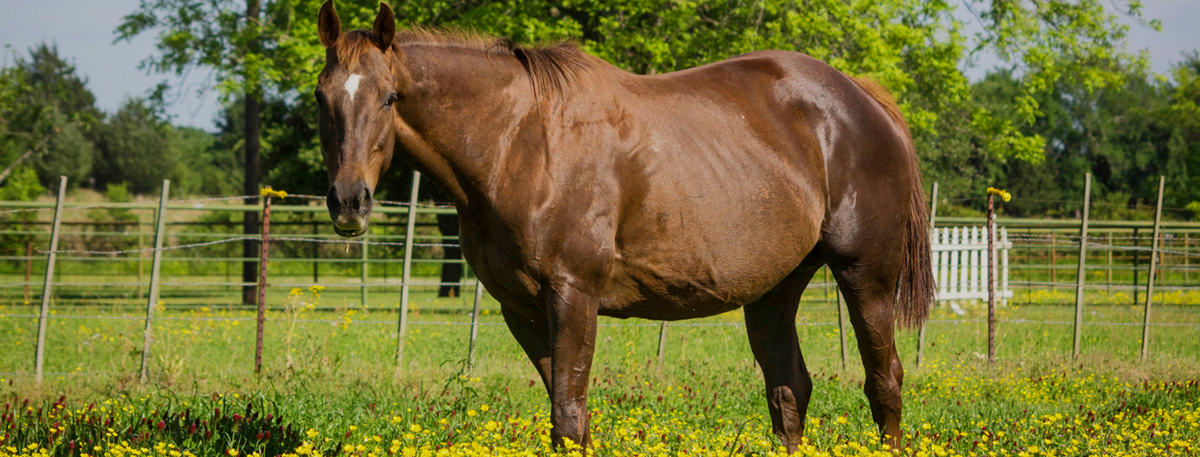
Mare Care
Pregnancy – What to Expect in Each Trimester
Pregnancy – What to Expect in Each Trimester
Once your mare is in-foal you’ll note several important milestones over the course of the 11-month gestation, including important action items to discuss with your veterinarian.
First trimester
- Fertilization occurs within the oviduct.
- Days 5 to 14: Embryo moves throughout the uterus.
- Days 16 to 17: Embryo becomes implanted in the uterus. Ask your veterinarian to confirm pregnancy with ultrasound and check for twins.
- Days 24 to 26: Embryonic heartbeat detectable with ultrasound. Ask your veterinarian to reconfirm pregnancy and check heartbeat.
- Days 35 to 40: Endometrial cups form and produce the hormone equine chorionic gonadotropin (eCG). Ask your veterinarian to reconfirm pregnancy or detect early pregnancy loss during days 32 to 36. Once endometrial cups have formed, a mare may lose an early pregnancy yet fail to cycle back for several weeks to months.
- Days 60 to 70: Use ultrasound to determine the sex of the fetus.
- Days 100 to 120: Fetus and placenta become the primary source of progestogens to help maintain pregnancy.
- Some “problem mares” benefit from an ultrasound exam to monitor the combined thickness of the uterus and placenta and to monitor fetal wellbeing.
Second trimester
- During the first seven to eight months of gestation, the fetus grows slowly at approximately 0.2 pounds per day.
- Ask your veterinarian for an ultrasound exam per rectum to monitor uteroplacental thickness on a monthly basis in mares with a history of reproductive loss or the birth of abnormal foals.
- Uteroplacental thickness should remain less than 1.0 cm from 60 days to term. Consider checking uteroplacental thickness in all mares at the time EHV-1 vaccine is administered during months five, seven and nine.
Third trimester
- Fetal growth accelerates. The fetus gains about 1 pound per day. The foal’s birth weight is expected to be nine to 10 percent of mare’s normal body weight. Total weight gain for the mare during pregnancy is 12 to 15 percent of her initial (pre-breeding) body weight.
- 2 to 6 weeks prior to foaling: Mammary gland development begins, and colostrum is produced. Colostrum is the first milk and contains high levels of antibodies, calories and other factors and cells critical in defense against infection. Colostrum also has laxative properties.
- Mares with premature udder development/precocious lactation/vaginal discharge should have uteroplacental thickness monitored with ultrasound to detect early signs of placentitis.
- 1 to 4 weeks prior to foaling: Softening of perineum and relaxation of pelvic muscles.
- Your veterinarian should open the Caslick’s at three to four weeks prior to foaling.
- 5 to 10 days prior to foaling: Teats begin to distend with colostrum.
- 24 to 72 hours prior to foaling: Waxing of teat tips. Mammary secretions become opaque and sticky.
- Less than 24 hours prior to foaling: Elongation and swelling of vulva. Calcium concentration in mammary secretions increases above 40 mg/dl or 200 ppm.
Monitor progestogen concentrations in mares experiencing abnormal clinical signs including unexplained colic, premature udder development or systemic illness and in mares with a history of unexplained pregnancy loss.
Contact your veterinarian if your mare demonstrates vaginal discharge and/or premature udder development or begins leaking milk well before her due date, as these can be warning signs of placental disease and a compromised pregnancy.
Nutritional Considerations
During the first and second trimesters, feed your pregnant mare at a maintenance rate with her total daily feed intake at 1.5 to 3 percent of body weight. Your mare should maintain a body condition score of 5 to 6.5. During the last trimester, you should focus on a slowly rising plane of nutrition. Your mare’s increasing caloric needs most likely require a change in feeding program to supply calories in a more concentrated form, such as a change from a vitamin/mineral supplement to a concentrate feed, or an increase in feed provided.
Once the mare foals, she will produce, on average, up to 3 percent of her body weight in milk per day during early lactation and consume 2 to 3 percent of her body weight in total feed (concentrate plus hay) daily. Underfeeding during early lactation can lead to weight loss that can negatively affect reproductive efficiency, conception rates, and growth and development of the suckling foal.
- Peak lactation occurs around four to six weeks post-foaling
- Mares require ≥ 35,000 kcal/day to support optimum milk production
- The mare’s energy, protein, vitamin A, calcium and phosphorus requirements may more than double from early gestation to early lactation
Consult your veterinarian for specific information regarding your mare’s nutritional needs.
